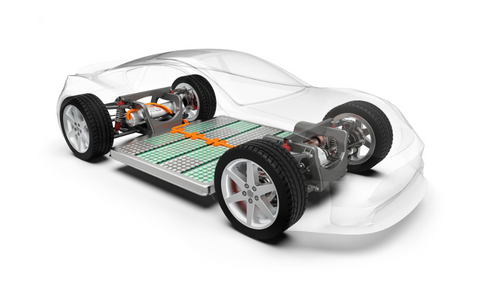

February 27 2023
Brian Lundgren, Director of Business Development , Gabriela Martin, Marketing Coordinator

The increase in battery film production in recent years can be greatly attributed to the growing demand for batteries in the United States, as new battery-powered products have gained traction in the supply chain. The largest of these battery-powered items, physically and financially, is the electric vehicle (EV), which is predicted to push lithium-ion battery production to its limits with its high projected demand. The batteries necessary to power EVs must go even further on a single charge and weigh less than batteries of the past to store the most condensed energy within the lowest mass possible. In addition, since Congress passed the Bipartisan Infrastructure Law in 2021 and the Inflation Reduction Act in 2022, more governmental funding has gone toward efforts for clean energy and lower carbon emissions in the United States. Because EVs have positive environmental implications for lowering carbon emissions on a larger scale, the production of these vehicles and the batteries that power them have increased rapidly in recent years. Along with this significant increase in battery production has come the necessary rise in battery separator film manufacturing.
What exactly is battery separator film, and why is it so crucial to the technology of batteries?
This microporous polymer film is a critical component of rechargeable batteries. It creates a microporous barrier between the anode (the negatively charged electrode) and the cathode (the positively charged electrode) of the battery, thus separating these electrodes from an uncontrolled reaction between them. This separator film allows the exchange of ions from one electrode to the other during the charging and discharging phases. The film, also known as a polymer membrane, is produced through a dry or wet process where extrusion and stretching, more technically known as biaxial orientation, serve to achieve the porosity and strength properties necessary to uphold this film. The dry method involves extruding, stretching, and annealing steps, while the wet process consists of mixing, extruding, stretching, and removing additives. Some of the more common polymers used for manufacturing battery separator film include Polyamide (PA), Polyethylene (PE), and Polypropylene (PP). In addition, the biaxial orientation process can also include supplementary processing of these materials with special coatings to improve the performance and safety of batteries.
Why is biaxial orientation essential to the production of battery separator film?
Biaxial orientation, also known as biax orientation, involves heating and stretching the polymer film sequentially, first in the process, or machine direction, then in the transverse, or cross direction, thereby improving the film's functional performance. The orientation process is critical in creating high-quality battery separator films, as it enhances the film's strength, dimensional stability, and ion exchange properties. With the use of biaxial orientation, the polymer’s structural integrity is improved due to the more uniform and aligned molecular structure, which strengthens the film and decreases the risk of cracking or puncturing due to thermal or mechanical stress. Enhanced and controlled ionic exchange is also achieved through this process as a result of creating more consistent porosity throughout the material’s density. This augments the ability of the batteries to withstand high temperatures and maintain performance stability while also increasing total charge cycles and decreasing charge times. Increased electrode durability and improved electrolyte performance are additional benefits that result from high quality, biax oriented separator film, which add an extra layer of safety to minimize short circuits, thermal malfunctions, and overall degradation in the batteries.
At Parkinson Technologies, the machinery used to produce separator film through biax orientation is essential to our company's equipment offerings and to the total success of our customers producing battery separator films and other microporous membranes. Our production is growing along with battery demand and we are always open to new partnerships that contribute to a better and more sustainable future.
For more information regarding Parkinson Technologies biaxial orientation equipment offerings, please fill out the form below.